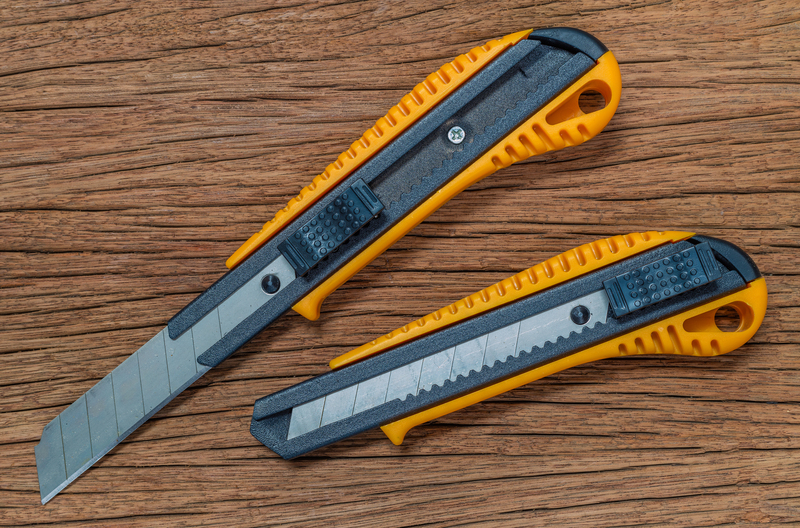The Do's and Don'ts of Piano Moving: Why DIY Often Fails
Posted on 04/06/2025
The Do's and Don'ts of Piano Moving: Why DIY Often Fails
Moving a piano is unlike shifting any other household item. Its unique size, weight, and delicate construction make piano moving one of the most challenging tasks for homeowners. While it may seem tempting to undertake DIY piano moving to save money, there are numerous risks and pitfalls associated with this decision. In this comprehensive guide, we'll examine the essential tips (the do's and don'ts) for moving your piano, and discuss why DIY piano moving often leads to disaster.

Understanding the Complexity of Moving a Piano
It's important to first understand why moving a piano is a specialized process. Pianos, whether grand or upright, are:
- Exceptionally heavy - A standard upright can weigh between 300 and 500 pounds, while grand pianos can exceed 1000 pounds.
- Awkwardly shaped - Their weight isn't evenly distributed, making balance a constant challenge.
- Delicate and finely tuned - The internal strings, hammers, and action are sensitive to shock and vibration.
- Valuable - Many pianos have high monetary or sentimental worth.
For these reasons, DIY piano moving exposes your instrument to a number of hazards.
The Do's of Safe and Efficient Piano Moving
1. Hire Professional Piano Movers
The safest and most reliable way to move any piano is by hiring experienced and trained piano movers. Piano moving companies have the necessary equipment--like heavy-duty dollies, skids, moving pads, and ramps--plus the expertise to maneuver pianos safely through tricky spaces.
- Pro Tip: Look for movers with insurance and positive client reviews to guarantee your piano's protection.
2. Plan the Moving Route in Advance
Whether moving a piano across the room or across town, study your route in detail. Measure doorways, halls, and staircases to confirm the piano will fit, and clear all obstructions. Take note of:
- Doorway and hallway widths
- Turns and corners
- Ramps, steps, and floor transitions
- Fragile flooring or carpets
3. Secure Additional Help
Piano moving is not a solo job. Even with professional movers, extra manpower is required for lifting and steadying the instrument, especially on stairs or uneven surfaces. For a grand piano, four or more people may be necessary.
4. Protect the Piano and Surroundings
Use thick moving blankets, padding, and wraps to shield the piano surface from scrapes and dings. Secure all moving parts--like the keyboard lid--and cover exposed areas. Prepare your home by laying down runners and protecting walls and corners.
5. Use Proper Moving Equipment
Specialized tools such as piano dollies, skids, straps, and ramps are vital. Never use household items as substitutes. The correct gear helps stabilize and distribute weight, reducing the risk of injury or damage.
6. Communicate Clearly During the Move
If you must move your piano yourself (which is never recommended), clear communication among your helpers is critical. Assign clear roles and use verbal cues for every lift, shift, and step.
7. Retune and Inspect After the Move
After relocation, have your piano professionally inspected and tuned. Even the most careful moves can disrupt the internal mechanism or tuning, and a pro can spot issues before they worsen.
The Don'ts: Mistakes That Make DIY Piano Moving Risky
1. Don't Underestimate the Weight or Size
The biggest error in DIY piano moving is underestimating the instrument's weight. This can lead to sudden drops, which pose severe risk of personal injury or catastrophic damage to the piano.
2. Don't Rely on Improvised Equipment
Attempting to move a piano with household dollies, carts, or furniture sliders is a recipe for disaster. Improvised tools lack stability and strength, increasing the likelihood of accidents.
3. Don't Move a Grand Without Disassembly
Grand pianos must be partially disassembled for safe moving. Legs and pedals should be carefully removed, and the body placed on a piano skid. Forcing a grand through a door or up stairs without proper procedure can break the frame, legs, or keys.
4. Don't Attempt Solo Moves
Never try to move a piano by yourself. Even upright pianos require at least two strong adults, and assistance is essential throughout. Going solo risks serious back injuries and total loss of control.
5. Don't Skip Planning
Spontaneous DIY piano moving almost always fails. Carefully planning every aspect--the route, timing, helpers, and tools--reduces last-minute surprises and danger.
6. Don't Ignore Insurance
Professional piano movers carry insurance for a reason. If you damage your piano (or worse, your property or yourself) during a DIY move, homeowner's insurance may not cover the loss.
7. Don't Forget the Environment
Moving a piano in wet, icy, or hot conditions dramatically raises the risk. Weather and temperature changes also affect the wood and tuning, so plan accordingly.
Why DIY Piano Moving Often Fails
1. Unexpected Obstacles
Staircases, tight hallways, front steps, and narrow doors can turn moving a piano into a logistical nightmare. Professionals are trained to navigate obstacles--most DIY movers are not.
2. Lack of Experience and Training
Specialized training is crucial for moving pianos safely. The average homeowner is unfamiliar with:
- Proper lifting techniques
- Securing and loading onto trucks
- Handling delicate internal parts
Inexperience leads to broken piano legs, chipped finishes, and injuries.
3. Insufficient Equipment
Without professional moving equipment, your odds of injury and damage skyrocket. Proper moving skids, heavy-duty dollies, and harnesses are expensive and hard to obtain for a one-time move.
4. Risk to Home, Piano, and Personal Safety
A single slip can cause:
- Broken floors and walls
- Destroyed piano cabinetry or mechanics
- Severe personal injuries
In some cases, irreversible damage is done to the instrument--and the cost of repair often outweighs a professional move fee.
5. Post-Move Piano Problems
DIY piano moving usually leads to the following issues:
- Issues with tuning and action
- Structural stress, cracks, and loose parts
- Misalignments that worsen with time
Professional movers often guarantee their work, while DIY errors can be costly to reverse.
Additional Considerations: Types of Pianos and Their Challenges
Upright Piano Moving
While upright pianos are smaller than grands, they're still challenging to move. Their center of gravity is high, making them easy to tip. They can get wedged in narrow doorframes, and moving them down stairs without proper technique may cause severe damage.
Grand Piano Moving
Grand pianos require partial disassembly and special care. Removing the legs and pedals needs expertise, and the main body must be placed securely on a specialized skid.
Baby Grand and Spinet Pianos
Though smaller, these models remain heavy and fragile. Amateur movers often assume they're "moveable by hand," only to cause injury or damage keys and legs in transit.
How Professional Piano Movers Work
When you hire professional piano movers, the process typically includes:
- On-site inspection and route planning
- Disassembly (especially for grands)
- Secure packaging with blankets and wraps
- Safe loading and unloading with ramps and dollies
- Reassembly and placement in your new space
- Final inspection for any potential damage
Most pros also carry insurance to cover accidental damage, making this a much safer investment for your prized instrument.

Frequently Asked Questions About Piano Moving
Is it ever safe to move a piano yourself?
*In most cases, no.* Unless you are moving a very small spinet within the same room--and even then, with careful planning--professional help is strongly advised.
What should I do to prepare for professional piano movers?
Clear access routes, remove obstructions, secure pets and children, and communicate in advance about steps or tight corners.
Can professional piano movers also store my piano?
Yes. Many companies offer climate-controlled piano storage to protect your instrument during long moves or renovations.
Conclusion: The Smartest Way to Move Your Piano
Moving a piano is not a simple DIY task--it's a complex, specialized operation that demands expertise. The potential for damage, injury, and costly repairs is high when attempting amateur piano moving.
By following these essential do's and don'ts of piano moving, and understanding why DIY attempts often fail, you can keep your cherished instrument safe for years to come. When it comes to moving your piano, invest in the experience of professionals--it's a decision that protects both the value of your piano and your own peace of mind.
- Remember: The right move can make all the difference between years of beautiful music and a costly, heartbreaking loss.
Choose wisely, plan carefully, and trust experienced piano movers for a stress-free, successful piano move every time.



